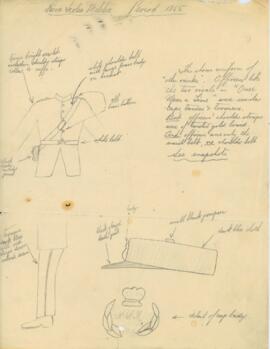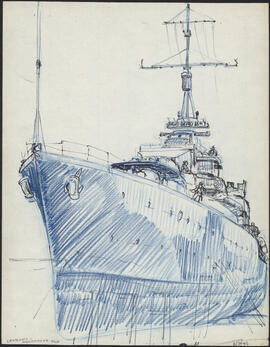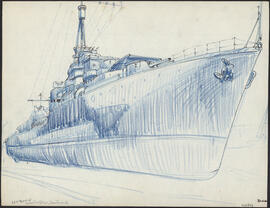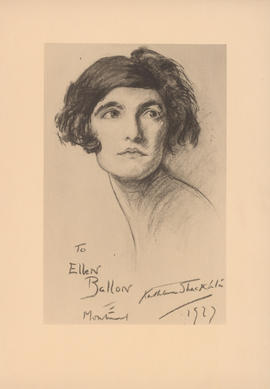- MS-2-701
- Fonds
- 1845-2001
Fonds includes Alan Creighton's diaries, which cover many of the years from 1920 to 2000. Writings from the period 1920 to 1954 (many undated) are mainly short stories and poems. These writings include handwritten and typed, complete and incomplete, and published and unpublished works. There is also some correspondence throughout as well as copies of his two books of poetry. The fonds includes writings with titles such as "About Poetry," "Poetry Courses," "Thoughts," "Music & Art," and "Bedford Basin." His notebooks include evidence of a variety of courses taken, including French and Greek, music, poetry, and art (both practice and history, including Chinese art). There is also a record of his art sales from 1964 to 1999. Personal and family documents are included in the fonds.
Alan Creighton's artwork is extensive and primarily in the form of sketches and watercolours, with a few oil paintings. Many of his sketches are in albums, many of which are used exclusively for one particular aspect of his studies. For example, album labels include "People," "Trees," "Skies," "Rock Formations," "Buildings," "Railway Sketches" (scenes from train journeys), and "Outdoors." Others identify a place and time and include such labels as "At the Zoo," "Nova Scotian Sketches 1951," "South Shore 1982," and "Toronto 1996." Still others contain a mixture of styles and themes. There are also numerous loose sketches and watercolours which have been loosely arranged into similar groupings such as "Clouds," "Boats," "Flowers," and so forth. Photograph albums include photos of family and of scenes taken by Alan as a reference for future paintings.
Included with Alan Creighton’s personal items are papers, writings, art, and memorabilia belonging to his friend and roommate Christine Eyles, who died without heirs. Some relate to her employment as a violinist in England and in Toronto, Ontario and some contain her poetry, plays, and artwork (in sketchbooks and on loose paper). Published and handwritten music scores, mostly for the violin, are also included. A photograph album contains many formal portraits of family and friends taken in England in the early 20th century. Records also include papers by and about her father, Charles Eyles, a famous violin-maker. Such materials include advertisements, brochures, and letters attesting to the high quality of his craftsmanship.
Creighton, Alan

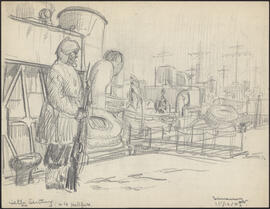
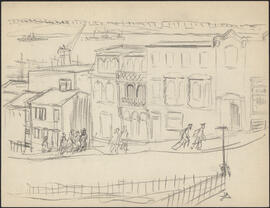
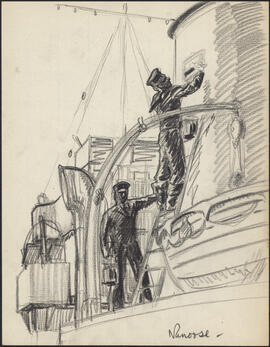

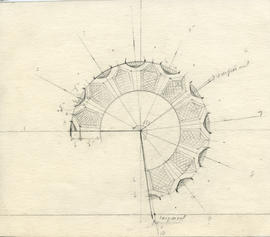

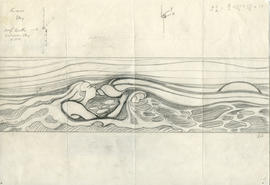
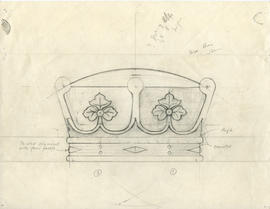

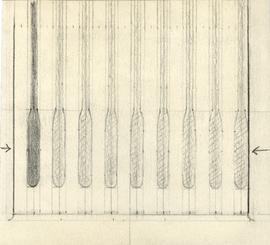
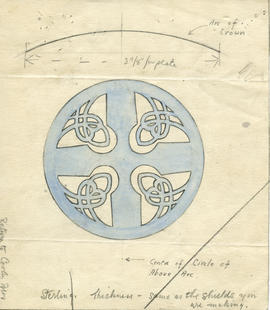
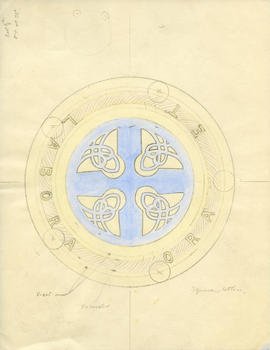

![Nova Scotia College of Art / J. MacIntyre : [etching]](/uploads/r/dalhousie-university-archives/3/9/f/39f9b40caf916007588a956bf4a4708712ff014b34a24c1758a03f2b0523f67f/b618ad3e-ec62-4a4b-91eb-c22f56ac333b-MS-2-280_80_33_142.jpg)
